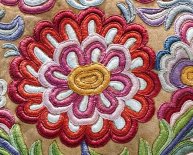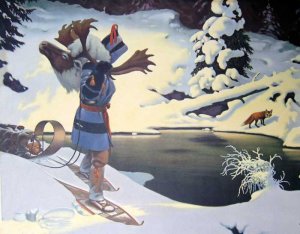
First Peoples' Ways Vacation
The Indian Trails
The Indian Trapper - Arthur Heming defined the appearance of Canadian history for years of Canadian schoolchildren
Most ways travel which were used to explore and develop Canada were inherited from Canada's First Peoples. Many of these methods of travel are used these days, for work and entertainment.
For thousands of years initially Peoples stepped many places especially in winter.
They developed two outstanding products in making travel over deep Canadian snows much more manageable: the snow footwear together with toboggan.
Toboggans could be pulled manually or by puppy groups.
They used well-defined tracks of travel, for happening searching trips and on the war-path.
They used the waterways whenever we can and made use of portage routes to prevent rapids.
Cornelius Krieghoff painted numerous Canadian views of Indians traveling in winter and summertime throughout the 1840s to 1860s.
The toboggan in addition to puppy staff allowed quick vacation, with huge lots, in cold temperatures.
Arthur Heming will pay tribute to your superior skill of local canoeists just who made possible the development of Canada.
Canoe portages had been called holding locations because here the luggage ended up being offloaded, and combined with canoes on their own, carried on the backs of the males to another location location in which canoes could safely be properly used once again.
Some portages, like around a waterfall, had been acutely short; other individuals had been a number of miles long.
The holding location at Niagara Falls ended up being nine kilometers long on the east lender. The routes were used six ins to a foot deep through the forests.
To save time, very first Peoples usually avoided performing short portages towards one lengthy one. If it had been extra-long, they would often abandon their particular canoes and build new people away from elm in the far end.
a print through the early 1700s showing Indians portaging
down the steep right-hand side of Niagara Falls
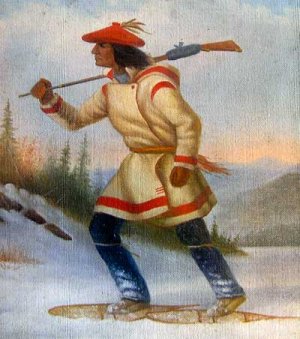 Canadian Canoe at a Portage - Currier & Ives 1860
Canadian Canoe at a Portage - Currier & Ives 1860
Without Indian canoe, Canada's founding business, the fur trade, couldn't are developed
The First Peoples prevented canoe travel on the open liquid of this Great Lakes due to the risk of capsizing from waves or unexpected wind storms.
They hugged the coast or snaked between countries for safety.
To attain Lake Simcoe and Georgian Bay they headed primarily up streams that flowed into Lake Ontario.
These Indian trails were the primary roads that were later on employed by very early Europeans to make it to top of the Lakes.
Indian trails could be found all-around Southern Ontario particularly the Niagara region.
The most essential path to travel north from Lake Ontario was the Humber Trail. It then followed the Humber River north across a portage to Lake Simcoe.
Showing precisely how to not ever paddle Canada's nationwide boat, is previous Prime Minister Pierre Elliott Trudeau, whom accustomed venture out in this canoe without a life coat, so set a negative example which has had cost countless Canadians their resides.
As soon as the Europeans very first found its way to the united states they found initial Peoples utilizing the canoe as their only means of water transportation.
The name canoe actually came from the West Indies, where in actuality the individuals told Columbus that is really what their boats had been called.
The birch tree had been essential on Indian as well as the voyageur. Its bark made best canoes, was the covering when it comes to wigwam or hunter’s camp, served a s a surface on which to knead flour, or had been folded to produce containers to boil food or make baskets.
Indians used birch bark to leave hieroglyphic notes at portages for his other tribesmen. It absolutely was utilized as writing report, for maps, or even to make sketches.
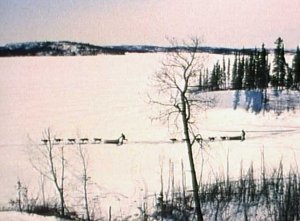 into the 1790s, Mrs. John Graves Simcoe made numerous drawings on birch-bark.
into the 1790s, Mrs. John Graves Simcoe made numerous drawings on birch-bark.
The bark ended up being rolled into resin soaked torches to light the portage path at night, the camp to make repair works, or even the spear fishing website. It was beneficial to firewood.
The birch canoe had been by far the most crucial boat used by the Indians of Canada. Indeed despite the Europeans appeared, it had been for many years, truly the only way of long-distance travel by-water.
Ojibwe bark tipi Black River, Ontario - Julius Humme c 1860s
Birch and elm bark had been mostly used as refuge coverings
and for making canoes
Champlain in Georgian Bay 1615 - JD Kelly
Champlain had been 1st European to make use of the birch canoe in the journeys to Ontario in 1615.
For the following 200 many years it had been utilized universally by explorers, missionaries, traders, and soldiers.
The 2 main fur trading organizations, the Hudson’s Bay Company additionally the Northwest business used huge birch canoes to transport huge cargoes of trade products to western Canadian trading posts and return to society with huge bales of fur.
Birch canoes had been frequently built in early summer when the sap made the lumber easy to work with. Just a knife had been necessary to make a birch canoe. Huge birch woods are found that large moves of bark are removed. Often a tree ended up being discovered large enough to supply an individual little bit of bark to create a twenty-foot canoe, without seams.
In order to make a birch canoe a-frame of cedar offering the overview associated with the boat had been hung from four powerful articles. Gunwales of cedar are run across the sides from stem to stern. Cedar ribs are then curved towards form of underneath and connected to the gunwales. The ribs are then sheathed with thin, level, and versatile items of cedar put lengthwise. The birch bark rolls are then put like a skin over top and sewn together with cedar origins. The seams are covered with gum, boiled and prepared from the pitch pine. The bow therefore the stern are curved, sewn shut, and decorated with paint or porcupine quills. An extra gunwale is added to keep the birch skin-tight toward ribs. Bottom boards might be added at bow and stern to protect the bark epidermis from harm whenever pulling it ashore or groing through stones.
Birch canoes could possibly be twelve-feet long keeping two people toward thirty-six base lengthy war canoe carrying fourteen paddlers.
Ojibwe bark tipis - Frederick Verner, 1878
James Bartlett - Canoe at a Camp
Champlain which help portaging a birch canoe 1615 - JD Kelly
Dug-out canoes created by the Carrier very first Peoples of this BC interior
In Indian nation the woods provided a much wider assortment of boat-making possibilities.
The first boats used by the Indians had been dugout canoes. They certainly were manufactured from a half-log and hollowed on.
The principle woods used were pine, black colored walnut, butternut, and basswood. The last two were the lightest and never effortlessly split by the sunshine. A well made dugout might be portaged by one-man.
Dugouts were used for short trips by women.
Dugouts had been an edge whenever one wanted to make as little noise as you can like whenever hunting in a marsh.
The wild rice and rushes will make an excellent rustling from the part of a birch canoe. Nevertheless solid wood walls of dugout deadened the noise.
The biggest dugouts, therefore the most creative, had been built by the Northwest seaside Indians. They built huge sea-going dugouts to hunt whales and check-out war. These huge cedar canoes had been elaborately created and embellished.
A Haida war canoe
All that continues to be of a massive Haida war canoe abandoned, a century ago or maybe more, during construction,
deep in Queen Charlotte isles forests
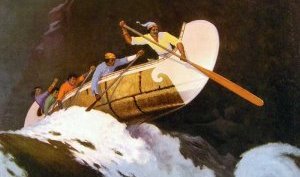
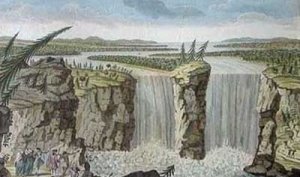
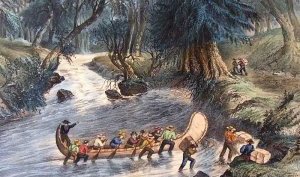
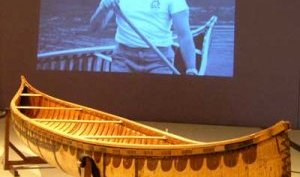
city at
development 2 years
is this a vacation
entrepreneurs only
vacations by rail europe
developmental disabilities jobs
energy entrepreneurs
first time entrepreneurs
colorado state map with major cities
entrepreneur definition us history
woman of entrepreneurs
start-up company
of development
it game development
you must find them straight
vacation in ma
healthcare startup jobs san francisco
city of time
vacation to go tours usa
sports startup
motion black
ecommerce
developmental milestones 4-6 months
developmental psychology
vacation movie
st vacation
development goals
low competition business
developmental milestones 4-7 years
free development
baby developmental milestones 4 months
motor 50
what my city
is entrepreneur
commercialization
inspirational read
dimensions of motivation
what is developmental and child psychology
inspirational quotes about life changes
man's vacation
cities in tennessee that start with s
tech companies in houston
your words are my inspiration your life
developmental milestones 6 months
m development group
venture capital
the city below
during development
developmental pediatrician
women development
our vacation
my vacation to
new startup business credit cards
front startup
vacation email
a m s development
celebrities positive quotes
arizona cities that start with p
fintech usa
pond spring startup
cities in alabama that start with a
entrepreneurs skills
entrepreneurs organization reviews
startup phone
entrepreneur now
cities in georgia
be strong be courageous quotes
my motion
public private partnerships
own city
city for
startup companies in san diego
kid entrepreneur
d m development
uk vacation
startup blog
development definition geography
world entrepreneurs day
lagos state university teaching hospital
startup family
development state
motor only
your obstacles are someone else's motivation meme
on off motor
m&a
one line quotes inspirational
australia small businesses
cookbook author
cities in pennsylvania that start with c
startup tv series cast
fintech updates
i am stronger because i had to be
real entrepreneur
all entrepreneurs
finding new business ideas
entrepreneur day
new technology in financial services
no one's ville tennessee
development for
motion group
line development
developmental psychology book pdf
cities in alabama that start with b
report vacation
american banker
it in motion
resident of the week quotes
the startup book
latest fintech
what is the motion
inspirational quotes for men
startup disk full photoshop
start up companies in san jose
the new motion
fintech summit
city of ma
inspirational quotes about life with images
vacation periods
entrepreneurship theory and practice
pick quotes
entrepreneurship meaning in telugu
s s motor
business coach
about my vacation
m t development
vacation haven
development markers
entrepreneur meaning in french
startup guy
10 top entrepreneurs
development week
scratch fintech
images of inspirational beauty
50 entrepreneur
developmental disabilities administration
developmental delay
development stages piaget
entrepreneur.com contributor
continuous improvement
famous people quotes of encouragement
just in time development
motion body
vacation order
life at a startup
development definition environmental science
inc entrepreneur
data motion
entrepreneur synonyms
quick startup businesses
cities in virginia that start with s
psychology life span
definition of entrepreneurship development
best travel places in north carolina
quotes about clarity in relationships
unsecured business line of credit for startup
lagos nigeria crime
code for startup
quotes to pump you up
startup call
cities in colorado
motor video
entrepreneur characteristics and traits
what is a entrepreneurs
what entrepreneur
online motion
motivational mountain meme
successful people quote
uk startup
vacations to go cruises from new york
startup people
20 best saying
vacations to go home page
party vacation
below the city
rackspace
4 development
tech company
fintech worldwide
have a vacation
the startup game
blood startup
list of cities in san francisco county
water vacation
business innovation
phd fintech
reward psychology motivation
up vacation
tourist in lagos
1 day vacation
vacation food
cities in colorado springs
no vacation
cities in tennessee map
startup repair loop windows 7
knewton
only motor
developmental behavioral pediatrician nyc
marketo
30000 dollar startup business loan
time for vacation
venture capital firm
vacation express punta cana reviews
it development news
fintech mining
entrepreneurship skills lecture notes
dreams short quotes
social development definition psychology
city's time
am motor
city new haven
motivation examples
commercialisation
city to
vacation days
fintech analysis
what is world development
policy entrepreneurs
technology industry
any new development
4 city
vacation express all-inclusive vacations reviews
business demand
entrepreneurial spirit examples
vacation red
new york entrepreneurs
up and down motion
entrepreneurs support
startup photos
real estate sector
entrepreneur meaning in telugu
motion 20
usc fintech
fintech trends
how to stay motivated working out
better fintech
fund my startup
motion world
paypal trends
fintech forum
simple encouraging quotes
all entrepreneur
through the city
famous quotes about moving mountains
fintech companies chicago
motion 15's
finding investors in my area
city people
fintech japan
fintech fishing
reddit buisness
startup london
developmentally appropriate practice articles
vacations hawaii commercial singer
points for development
city or
cities skylines 2018
entrepreneur.com franchise
own vacation
who are entrepreneurs
vacation time off
you are sayings
startup app
development through
startup boost
after my vacation
fintech in europe
development and health
city with people
best city simulation games on steam
own for my city
vacation club
startup netflix
different theories of motivation in psychology
in motor
vacation women
where is your city
entrepreneur top
introduction of motivation in psychology
vacations by rail canada
about your startup
startup ideas 2019
a startup company
vacation inc
real estate investor
lagos earrings
vacations to go river cruises vietnam
startup talk
o s development
kids entrepreneurs
lagos nigeria map
inspiration from
startup party
vacations by rail alaska reviews
quotes about mastery
developmental delays in children
women only entrepreneurs
startup jobs nyc
developmental milestones for infants by month
developmental delay in adults
fintech limited
technological evolution
startup.com movie netflix
small business ideas in hindi
dorm quotes
clarity quotes
psychology and child development
the motion
page development
lagos business school alumni
workday motivation quotes
fintech map
fintech toronto
vacations to go viking river cruises
cities in africa by population
how to stay motivated and focused
not reaching milestones
the pd book 7 habits that transform professional development
cities skylines dlc cheap
entrepreneur type
on the city
oilman
entrepreneur meaning in tamil
vacations to go complaints bbb
startup incubator
entrepreneurship quotes pdf
vacation share
fintech portfolio
startup business line of credit
set startup programs windows 10
city by
startup 2008
vacations hawaii main street las vegas
city of he
city years
startup way
flexible business ideas
entrepreneur quotes for women
heroku
best 2018 city builders
developmental stages of babies and toddlers
entrepreneurs start
involving quotes
buy my startup
free entrepreneur
motion email
during vacation
mba in fintech
development people
vacation media
is a city
motivation effects
vacation movie
cities in new york state
free website to meet investors
motion's
clarity quotes
nigeria city map
fintech 2019
on motion
about your startup
vacations to g
developmental pediatrician northern nj
Source: firstpeoplesofcanada.com
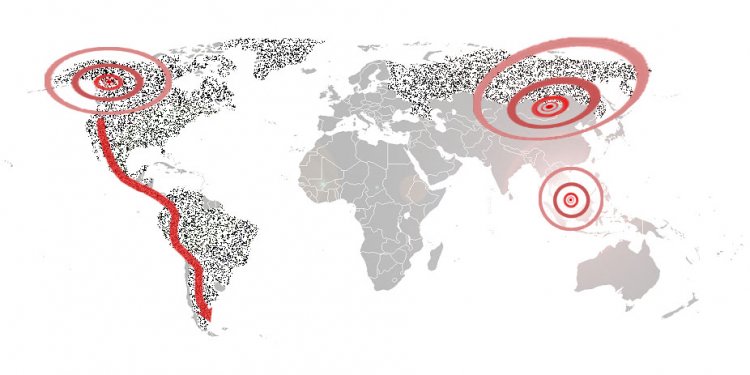

 Canadian Canoe at a Portage - Currier & Ives 1860
Canadian Canoe at a Portage - Currier & Ives 1860
 into the 1790s, Mrs. John Graves Simcoe made numerous drawings on birch-bark.
into the 1790s, Mrs. John Graves Simcoe made numerous drawings on birch-bark.





